Originally Posted by Darshan Gandhi
원문: TechFlow
소개
Over the years, many Web3 startups have faced challenges in scaling and maintaining a stable user base. Despite the initial hype around decentralization, the core issue remains building sustainable long-term business models in highly competitive sectors such as gaming, entertainment, social media, and decentralized finance (DeFi).
시장 capitalization will become increasingly important by understanding basic economics—such as the relationship between low market capitalization and high fully diluted value (FDV).
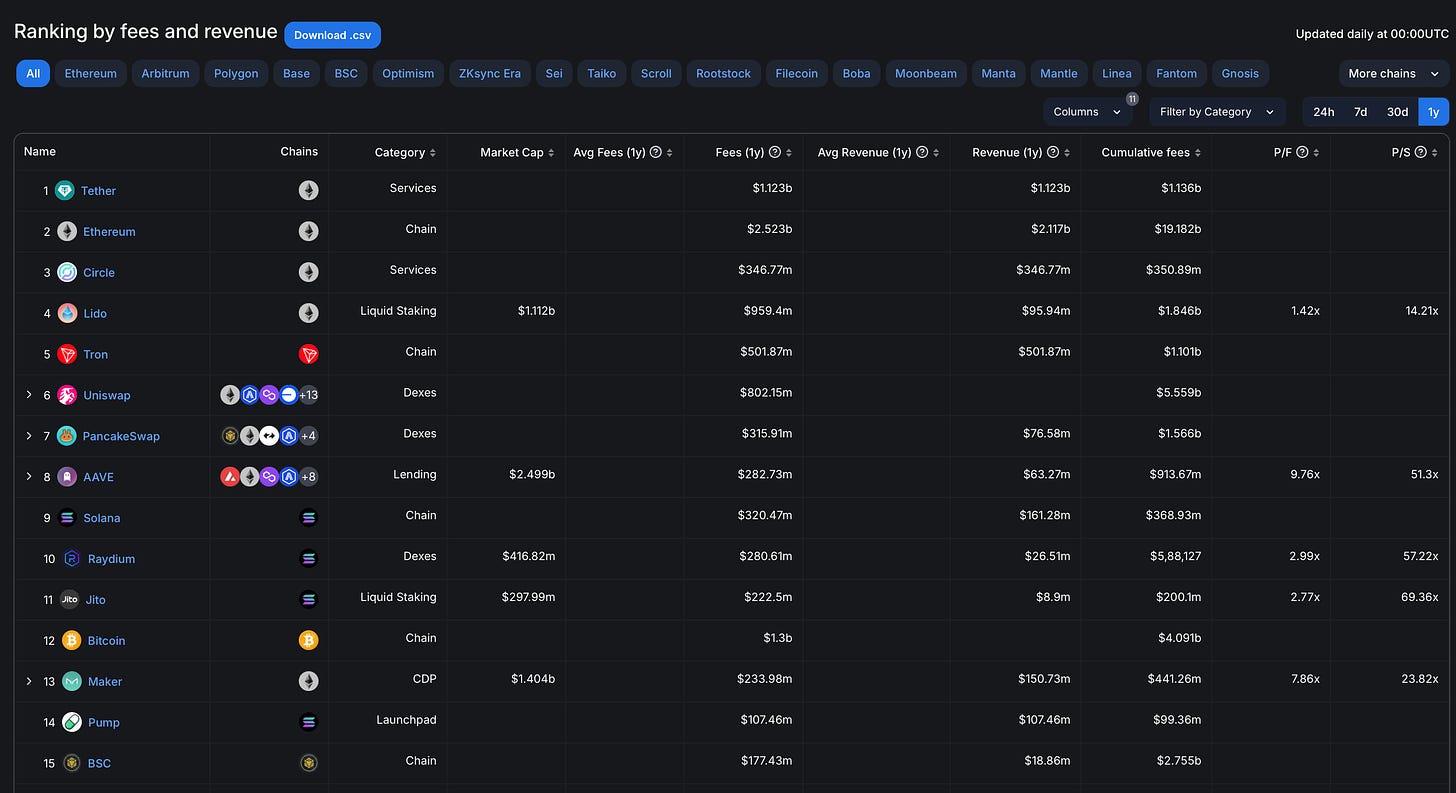
Unfortunately, many projects still prioritize short-term token hype over sustainable growth. After the peak of the cycle in 2021, many startups failed to even approach their previous all-time highs (ATH), let alone break through the ATH (among the top tokens, only $BTC and $BNB did this), and only a few projects were able to survive the 2017-2018 cycle.
A major problem in past Web3 cycles has been the lack of a robust business model. While software development cycles typically take 5-7 years to mature, projects like Ethereum are now only 8 years in, and projects like Solana are less than 5 years in. This process is very difficult. As a result, many projects fall into the trap of relying on token hype, which can bring short-term excitement but does not actually provide strong long-term value beyond governance.
The imbalance between speculation around tokens and their actual value accumulation and utility remains a major gap in the current ecosystem.
I believe that the true potential of Web3 lies in its integration with real-world industries such as energy, artificial intelligence (AI), the Internet of Things (IoT), and supply chains. By focusing on building these applications, Web3 can finally deliver on its promise of ownership, transparency, and broader social impact—moving beyond speculation and creating lasting value.
What are the current changes?
There is a clear trend towards creating tokens that are tied to real business models and real revenues. Projects should no longer rely on hype and narrative positioning to boost token prices; instead, the focus should be on providing real value – returning value to tokens through burning and staking, through voting rights, service access, or other utility mechanisms that promote long-term user engagement.
Both investors and users are now prioritizing projects that provide sustainable benefits. Concepts such as staking, token burning, and user rewards are helping these projects gain strength and ensure their growth. For example, Uniswap recently decided to reward its users for trading and providing liquidity.
This shift foreshadows a future where tokens are not just a tool for secondary market transactions, but become an essential component of the project.
Which areas are performing well?
Now, let’s actually understand which areas or ecosystems are performing well, generating sustained cash flow, and are actually being used by users.
While many projects are still in development or have just launched, most are moving towards identifying and illustrating important business metrics, such as revenue, profit, and user base, rather than just focusing on volume and number of transactions.
Here are some industries that are performing well and are considered cash rich, these industries have less speculative issues but more challenges in the initial stages of launch and distribution. Once resolved, these industries turn into cash cow businesses.
드핀
-
This is one of the hottest areas recently, with attention shifting to it from areas such as artificial intelligence (AI) and gaming, and some projects have performed well due to the actual usage and metrics data brought to this field, with Helium being the leader among them.
-
Projects like Helium, a decentralized wireless network, demonstrate the power of real-world utility. Helium’s HNT tokens are earned by users who set up hotspots to provide wireless coverage, and its value is derived from the use of Internet of Things (IoT) devices, not speculation.
-
There are also projects like GEOD and Hivemapper that crowdsource physical data, such as location and dashcam video, which can be monetized.
-
All of these projects are performing well at the revenue level and are able to generate good cash flow, which they can translate into growth in the value of their tokens.
Social Platforms
-
Web3 social is fun and exciting for everyone. Consumer applications are one of the main ways technology can really reach millions of users around the world. However, consumer cryptocurrencies have been facing difficulties getting off the ground for a long time.
-
Recently, the Alliance and other companies have strongly promoted this idea, and blockchains like Solana and Base have become more consumer-friendly, encouraging users to develop on them.
-
Applications like Farcaster, Lens Protocol, and Fantasy Top are actually working to change people’s perceptions and attitudes towards consumer cryptocurrencies. Some of these applications have been able to generate some meaningful revenue and user usage data.
-
However, it’s still early days compared to the wider Web2 world as the user base is still very small, but it’s a good start.
Launch Platform
-
The biggest challenges often arise during the initial stages of project launch – they lack the most important things: relevance and distribution channels.
-
Launchpads are a real game changer here, they provide these projects with a platform and an ecosystem of users, investors, and supporters.
-
스타트업 like Pump Fun and Multiplier were able to generate millions in revenue in a short period of time, fueled by the popularity and acceptance of memecoins as a category.
-
While I personally believe this is not a sustainable model in the long run as it hurts the space more than it creates value, it is still useful to understand the different verticals that are performing well and draw inspiration from them to build something longer term in other areas.
DeFi Products
-
DeFi remains an enduring space — and one of the only categories that consistently brings in significant revenue in Web3, with leaders like Uniswap, Aave, Maker, and Curve contributing significant revenue.
-
I believe these are boring but sustainable businesses that will be around for the long term. It will be interesting to see if applications can be built on the basic principles of DeFi and combined with other areas (e.g. prediction markets, gaming) to explore whether new markets or perspectives can be opened up.
Web3 vs Web2 Model
The core difference between Web3 and Web2 companies is how they generate revenue and operate. Web2 relies on centralized models such as subscriptions, advertising, and enterprise sales, while Web3 leverages decentralized models such as token economics, transaction fees, staking, and DeFi yields to create value for the platform and its users.
Web2 captures value through:
-
Controlling user data
-
Monetize premium content
-
Providing platform services
Web3 puts control in the hands of the community by:
-
토큰 Ownership
-
Decentralized Autonomous Organizations (DAOs) and Governance
-
Voting and participation incentives
While this decentralization opens up new opportunities, it also brings with it complex user experiences, regulatory challenges, and scalability issues, with obstacles such as blockchain congestion and high transaction fees.
Web3 startups are launching products quickly by using smart contracts, but face the following challenges:
-
Lack of convenient user guidance
-
Limited user retention mechanism
-
The products usefulness outweighs its speculative value
To achieve long-term success, the focus must shift towards building sustainable revenue models that translate into real token utility rather than relying on hype.
Here are a few different types of models and their applications in various fields:
Token-based model
-
Tokens drive the operations of the platform and often assume a governance role.
-
As the platform grows, the value of the tokens will also increase through burn mechanisms, etc.
-
Example: MakerDAO destroys MKR tokens when debt is repaid, thereby reducing supply and increasing value over time.
Subscription Model
-
Web3 platforms, like Audius, offer premium features or content for a recurring fee, cutting out intermediaries.
-
Artists and creators profit directly from their audience, just like in traditional Web2 subscriptions.
Platform Fees
-
Platforms like Zora earn revenue by taking a small percentage of each transaction.
-
User activity directly drives revenue growth.
시장
-
Platforms like Blur, OpenSea, and Rarible generate revenue by taking a percentage of each NFT/asset sale.
-
As trading activity grows, so does the platform’s revenue, directly correlating profitability with user engagement.
DePIN Network
-
Projects in this space reward users for contributing real-world resources, such as bandwidth, wireless coverage, or location information.
-
Helium allows users to earn tokens by providing wireless hotspots that support IoT devices.
Decentralized Exchanges (DeXs)
-
Decentralized finance (DeFi) platforms generate revenue by charging fees for services such as token swaps or lending.
-
For example, Uniswap shares swap fees with liquidity providers, ensuring both parties receive ongoing income.
Social Tokens
-
Creators mint their own tokens for fans to purchase or trade.
-
Revenue mainly comes from token sales and fan participation.
-
Rally enables creators to build closer connections with their communities through token ownership.
Web3 Games/Entertainment – Freemium Model
-
Web3 games’ revenue comes from in-game purchases, 시장 fees, or play-to-earn models.
분산형 AI
-
Decentralized cloud service providers, such as Akash Network, rent out computing power.
-
Users pay for these resources using tokens, competing directly with traditional cloud service providers.
-
There are also projects working on solving problems such as decentralized training, workflow, data scraping/collection, etc.
Launch Platform
-
Launchpads like DAO Maker help projects raise funds through token sales, earning a percentage or charging a fee.
Revenue Generating Projects
Projects that have real-world utility consistently outperform projects that rely on speculative token economics in the long run. Revenue-driven models are increasingly becoming the foundation for the most successful Web3 businesses, proving their value to users and investors through sustainable business models. This chart provides a comprehensive view of the top revenue-generating crypto projects.
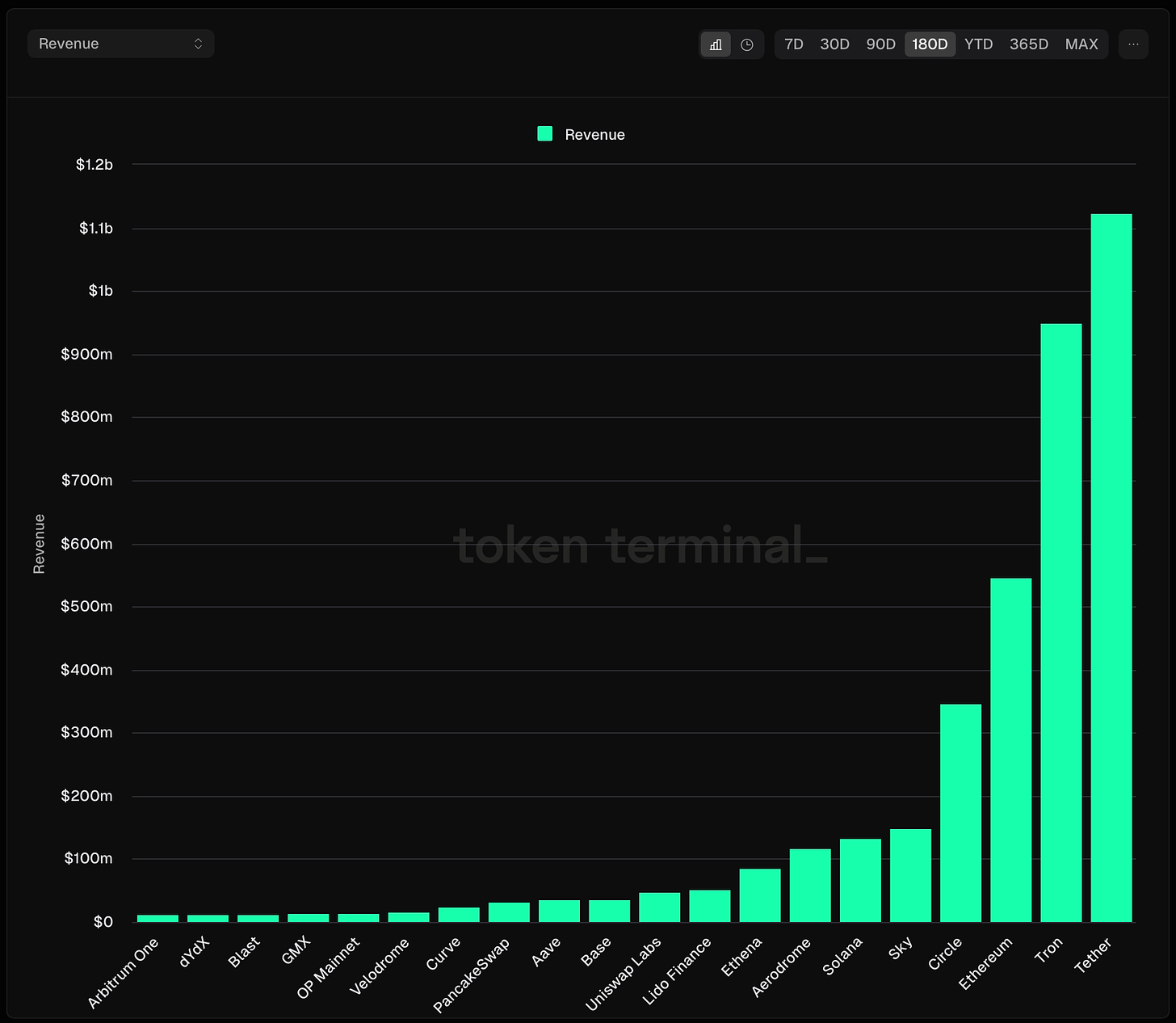
It’s great to see projects like Tether, Tron, and ETH dominating the space, all of which are independent blockchains/tokens that form the base layer of Web3.
When we look at the apps that reached $100M in revenue the fastest, we see a strong correlation between real-world utility and the financial performance of a project.
-
Projects focused on real-world applications, such as decentralized exchanges and DeFi platforms, tend to grow faster.
-
Their ability to generate steady income through transaction fees, staking rewards, percentage of reward pools, etc. are some of the methods that have helped them quickly grow to close to $100 million in revenue in such a short period of time.
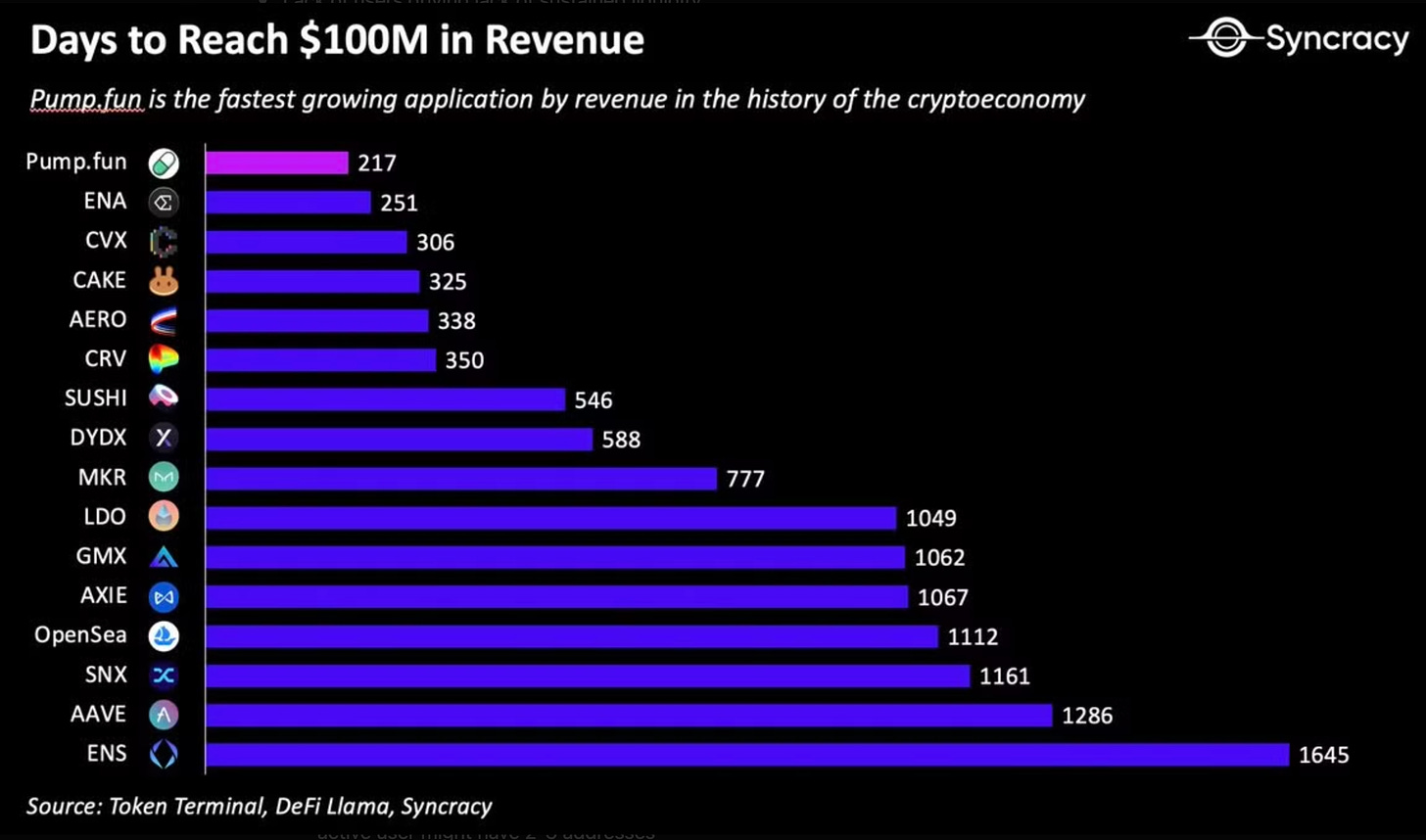
Let’s take a look at some of the most interesting projects at the moment.
1. Helium
Helium is one of the best performing projects in 2024, focusing on mobile operator services as an alternative to traditional service providers. It focuses on consumer scale and user onboarding, and utilizes Solana for settlement. The value of its token is related to network usage, not hype.
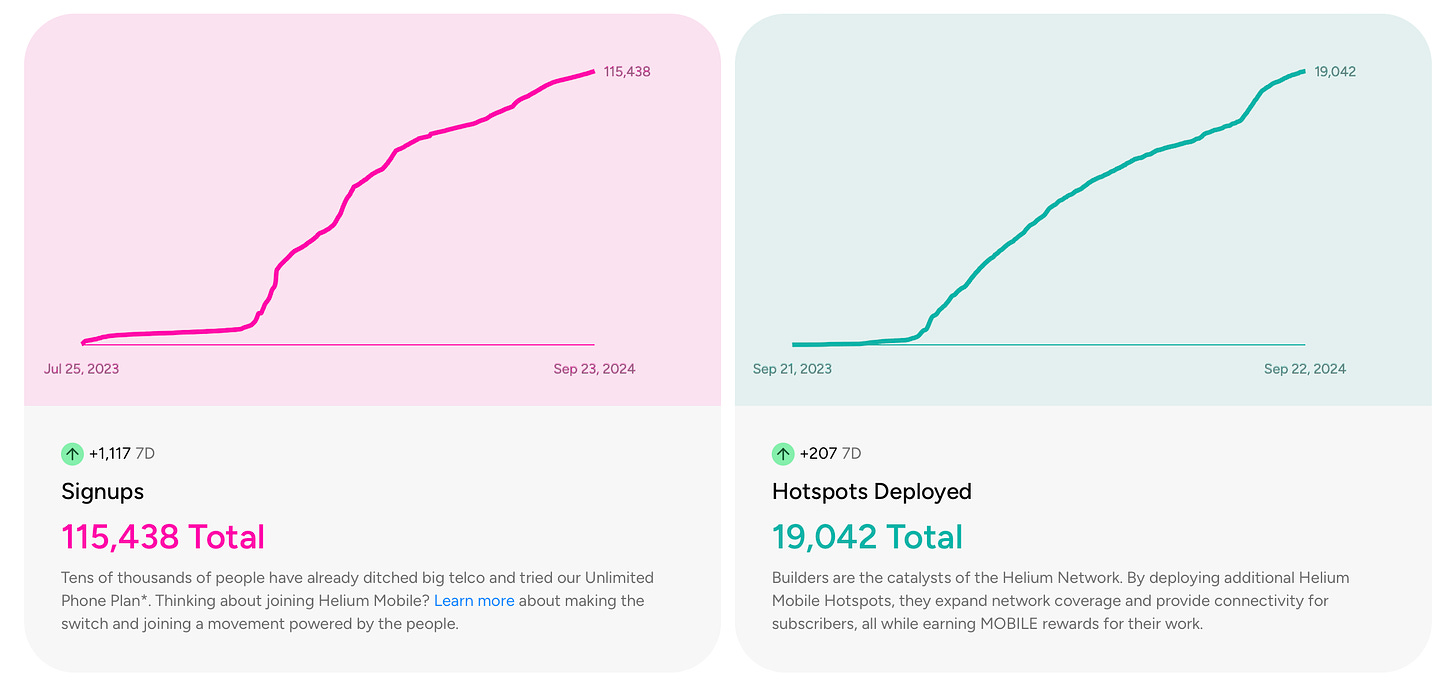
Since June, the network has attracted 756,000 users and transferred more than 19.1 TB of data. The best part is that most users don’t even realize they are interacting with the blockchain. The surge in registrations over the past year reflects Helium’s steady push to get more people using and adopting it.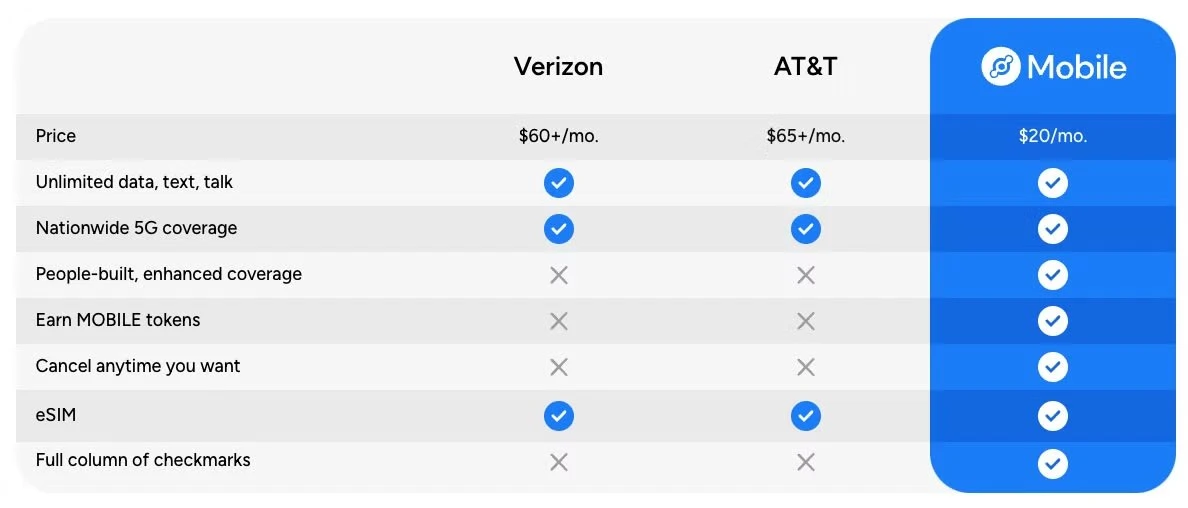
According to depin.ninja, Helium ranks #1 in terms of recent revenue generation. They have done some amazing work and it will be interesting to see how revenues rise as the 2025 halving approaches.
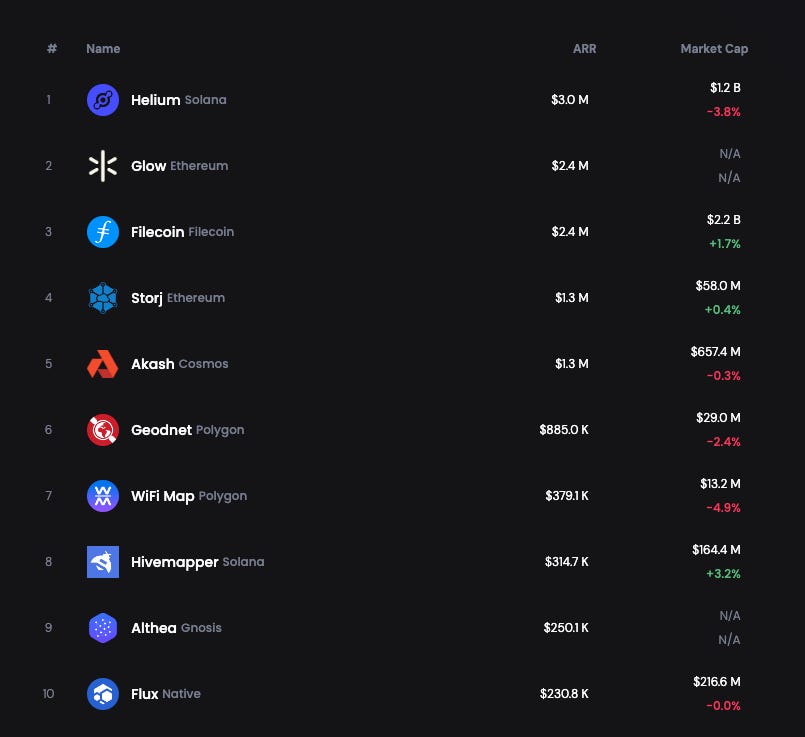
2. Decentralized Exchanges (DeX) (such as Uniswap and Jupiter)
Uniswap remains the largest DEX and continues to generate strong trading volume. However, with Solana’s recent surge in popularity, Solana-native DEXs like Jupiter are beginning to significantly take Uniswap’s market share.

Overall, the market outlook for decentralized exchanges looks promising, with each platform generating fees for each trade and handling a large volume of transactions. Just among the top five decentralized exchanges, the volume is close to $45 billion, a figure that is impressive compared to almost every other industry.
3. Farcaster
Farcaster is probably the largest crypto social media platform that focuses on user-owned content and interactive experiences. Rather than relying on token speculation, users pay for permanent storage of their accounts, which helps the platform generate some significant revenue.
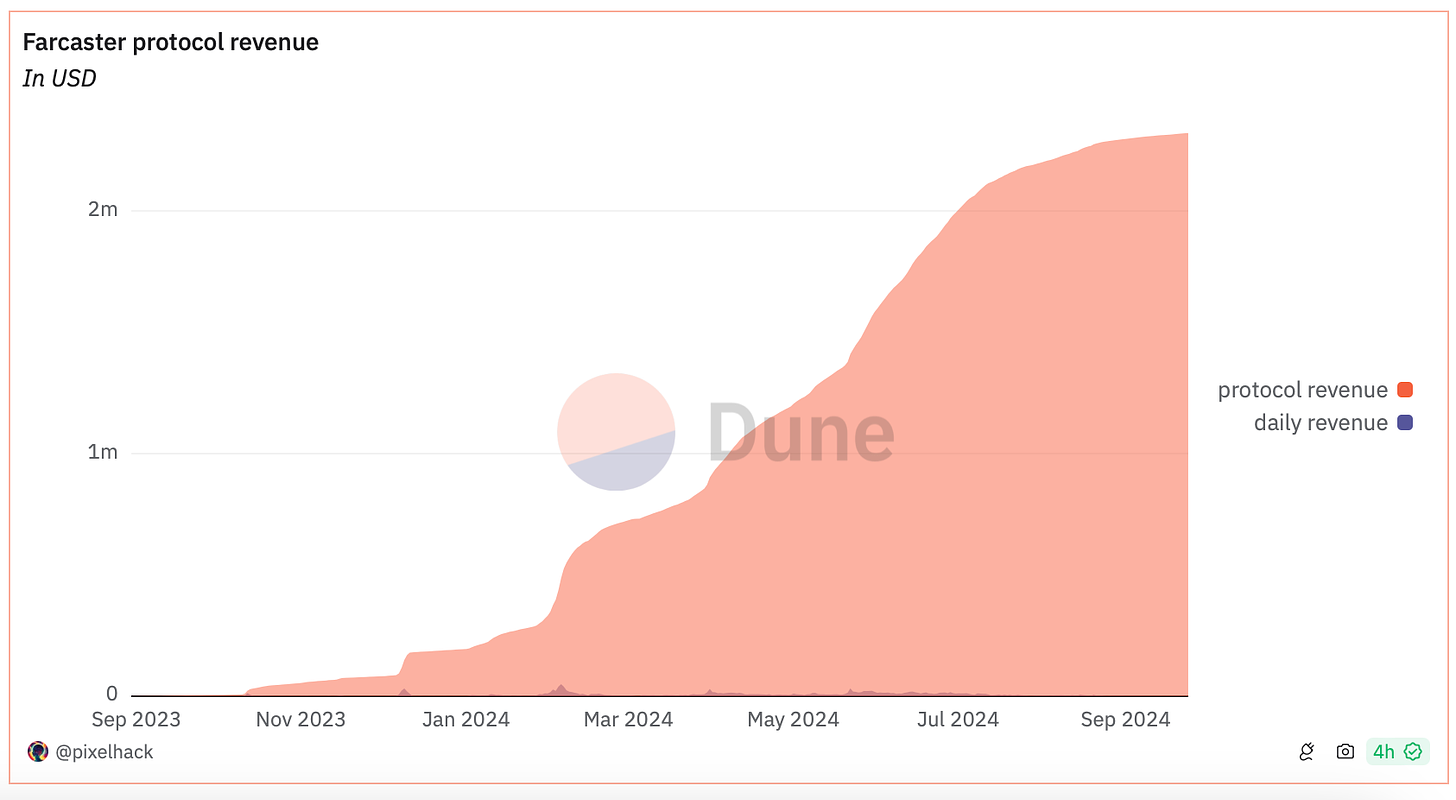
It has also benefited from support from the meme coin community, as well as the participation of high-risk investors (degens), gaining attention and support. Despite its low revenue compared to other industries, Farcaster is still a leading protocol in the crypto social space. It will be interesting to see how they scale to achieve their goal of 10 million users in the coming years.

4. GEOD
GEODNET is the worlds largest Web3-based real-time kinematic positioning network (RTK), providing high-precision location services for artificial intelligence (AI), the Internet of Things (IoT), and autonomous systems. By using real-time kinematic positioning (RTK), GEODNET aims to achieve 100 times better location accuracy than traditional GPS. This enhanced accuracy is critical for applications that rely on device sensors such as cameras, LiDAR, and inertial measurement units (IMUs), making it a key player in advancing AI-driven autonomous systems.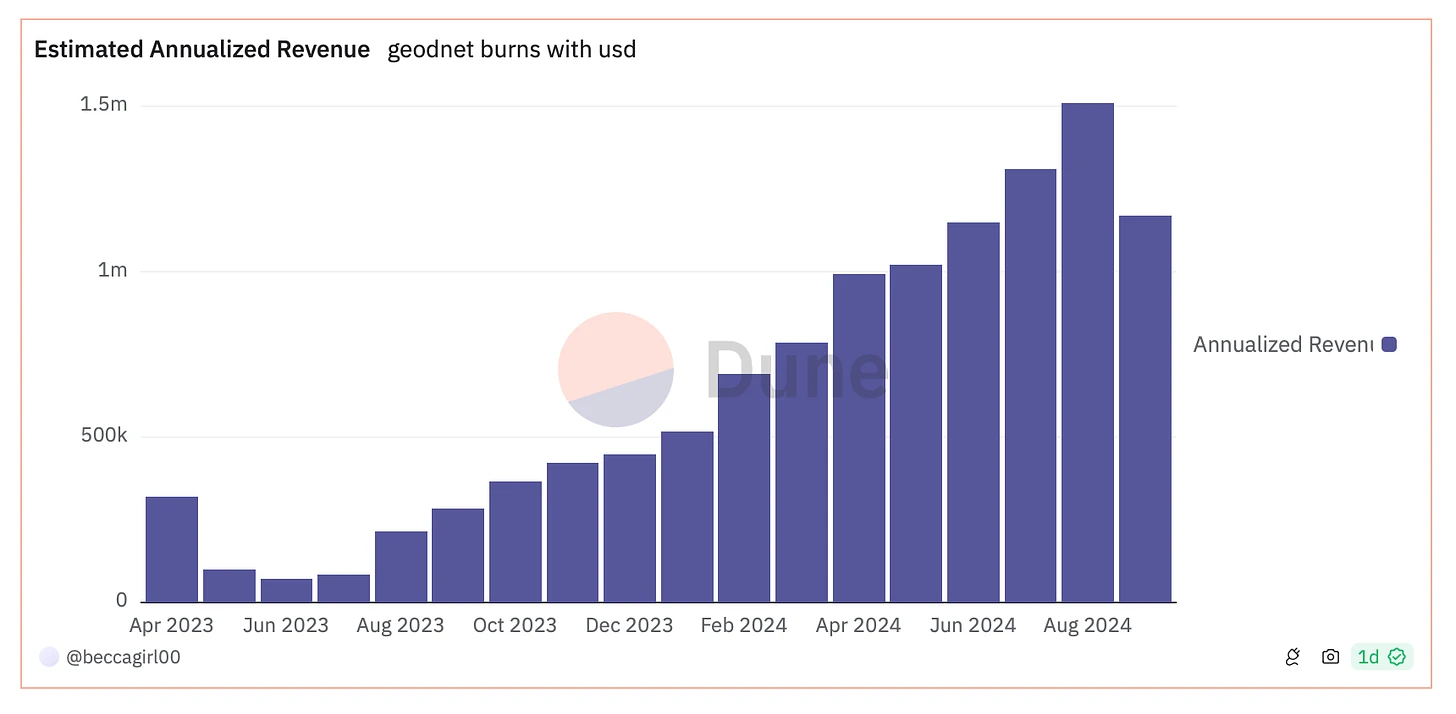
-
The network has grown rapidly, with over 9,000 miners currently deployed around the world, and has seen consistent monthly revenue growth of 10-15% since the beginning of the year.
-
GEODNET is on track to achieve $2-3 million in Annual Recurring Revenue (ARR) by the end of the year, making it one of the largest high-margin Decentralized Physical Infrastructure Network (DePIN) projects with strong potential for further growth.
-
Not only is their technology more accurate, it’s also 90% cheaper than the competition and offers wider global coverage.
-
Working with partners like the USDA, GEODNET is proving that long-term, steady growth can produce remarkable results, with the company already demonstrating a 20x revenue increase from $5,000 to over $100,000 per month.

5. Across Protocol
Across Protocol is a cross-chain bridge that enables seamless asset transfers between different blockchains. It earns revenue by charging fees on these transfers, making its success directly tied to the demand for fast and secure cross-chain liquidity. As more assets flow between chains, especially as multi-chain ecosystems become more popular, Across has taken a key position in this space.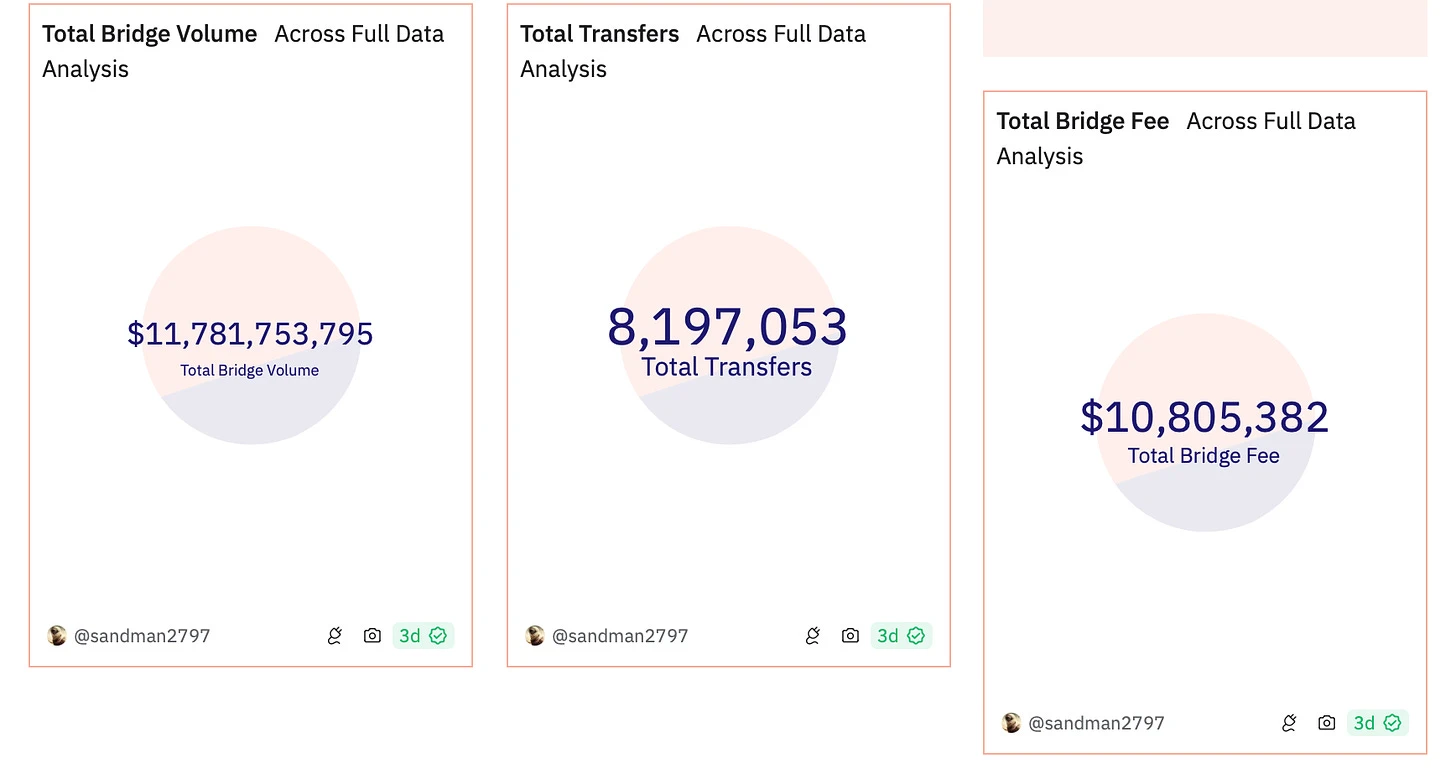
Over the past month, Across Protocol has dominated Ethereum chain transactions, processing over 60% of all Ethereum bridges through JumperExchange. This strong performance shows its growing influence in cross-chain operations. Thanks to intents, a new approach to cross-chain interoperability, Across is setting the standard for a smooth and efficient user experience when transferring assets between blockchains. Compared to other bridges, it typically offers extremely low latency, measured in seconds, while other providers require minutes. 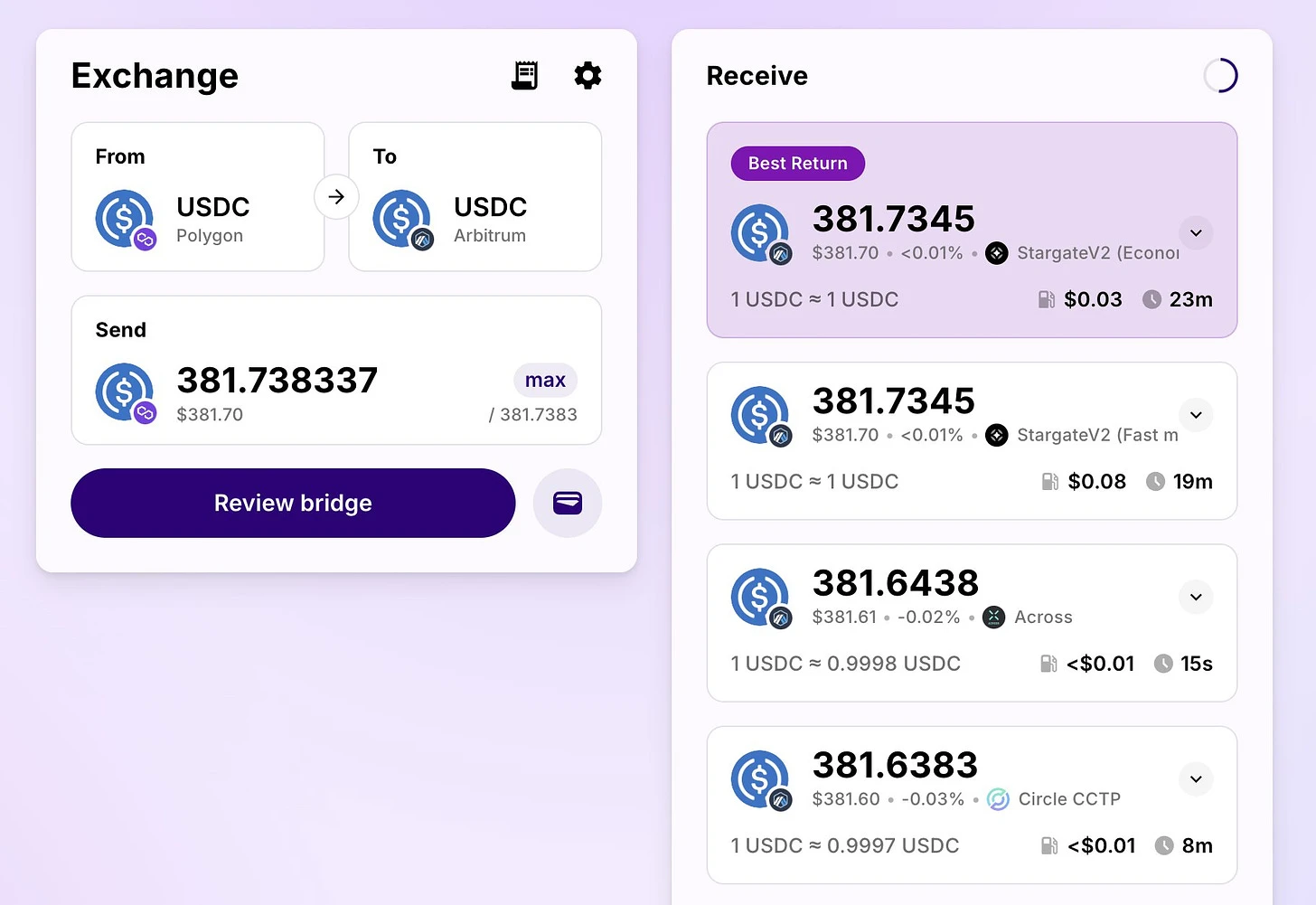
It is gradually rising in the competition for the network of cross-chain transfer service providers.

6. Kamino
Kamino focuses on optimizing liquidity management and provides users with a range of tools including lending and leverage strategies. The platform has experienced significant growth and is approaching $14 million in annual recurring revenue (ARR).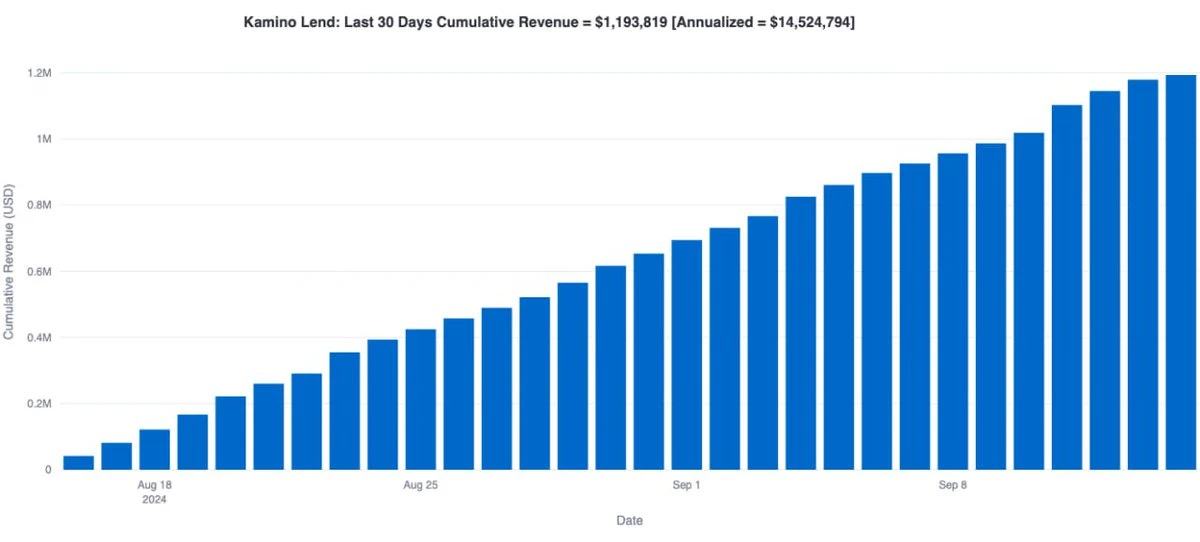
Over the past year, Kamino has generated approximately $30 million in cumulative interest for its users, highlighting its ability to provide stable returns through decentralized finance (DeFi) products.
7. Stablecoins (Tether Circle)
Stablecoins have become indispensable in the Web3 space, with Tether (USDT) and Circle (USDC) leading the way. These two giants dominate the market and have become the preferred stablecoins for traders, developers, and users. Their widespread adoption and liquidity have made them the backbone of many decentralized finance (DeFi) platforms.

Tether, in particular, is often compared to major Web2 financial companies such as JPMorgan, Visa, and Mastercard due to its rapid rise and dominance in the financial ecosystem. In a short period of time, it has managed to surpass many traditional giants and take the lead in market coverage and integration with the crypto market.

Tether and Circle consistently outperform other stablecoin providers and blockchain protocols, holding the largest market share in Web3. Their stability, liquidity, and integration in multiple chains and decentralized applications (dApps) set them apart and make them an important part of the space.
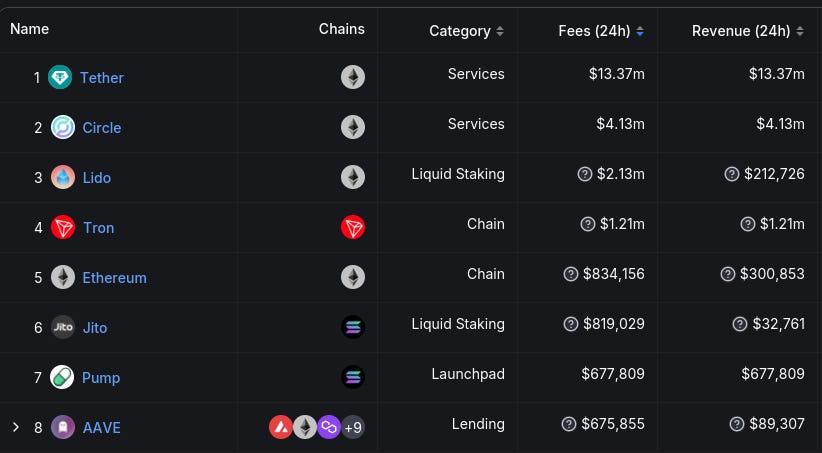
Summarize:
-
These projects demonstrate how real-world utility is becoming increasingly important in driving crypto revenue.
-
Whether through infrastructure, social, gaming, or DeFi (decentralized finance), the future of Web3 will be shaped by projects that successfully align their token economics with real-world utility and sustainable revenue models.
What didnt work out?
Friend.tech is a great example of how a project can generate quick buzz and revenue, but fail to establish long-term sustainability. It’s a great example of why not all profitable startups succeed.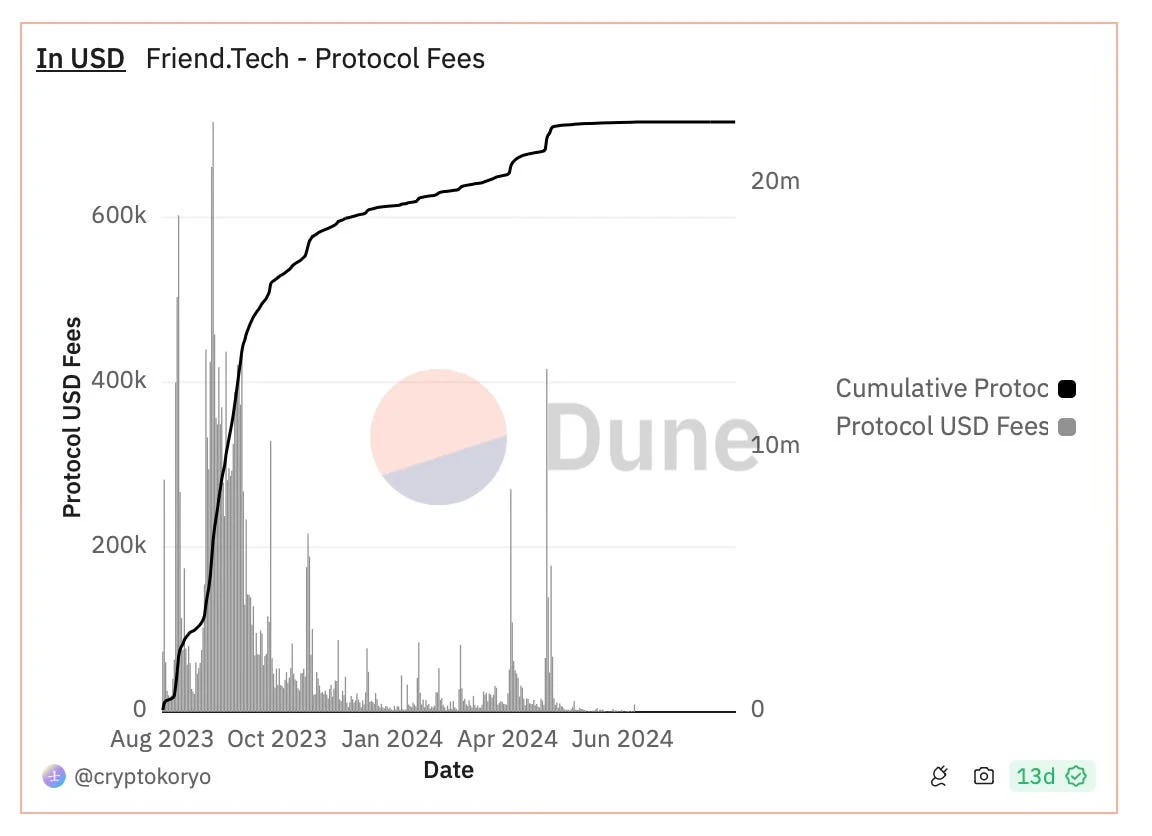
The app’s rise was due to users buying other people’s “keys” (shares) in the hope that as users became more popular, the value of those “keys” would rise, and more and more users would join over time. However, with no real utility outside of speculative trading, users quickly lost interest after the initial excitement wore off. Additionally, the initial craze can also be attributed to the team previewing an airdrop to early participants — but since then, the platform has had little utility and user adoption.
Speculation-driven economies are inherently fragile — users seek quick gains but leave when no real value is provided. In contrast, platforms like Uniswap and Helium have maintained long-term engagement by providing real-world utility, demonstrating that sustainable success comes from creating lasting value, not hype. Friend.tech lacks this foundation, leaving little incentive for users to continue participating once the speculative craze fades.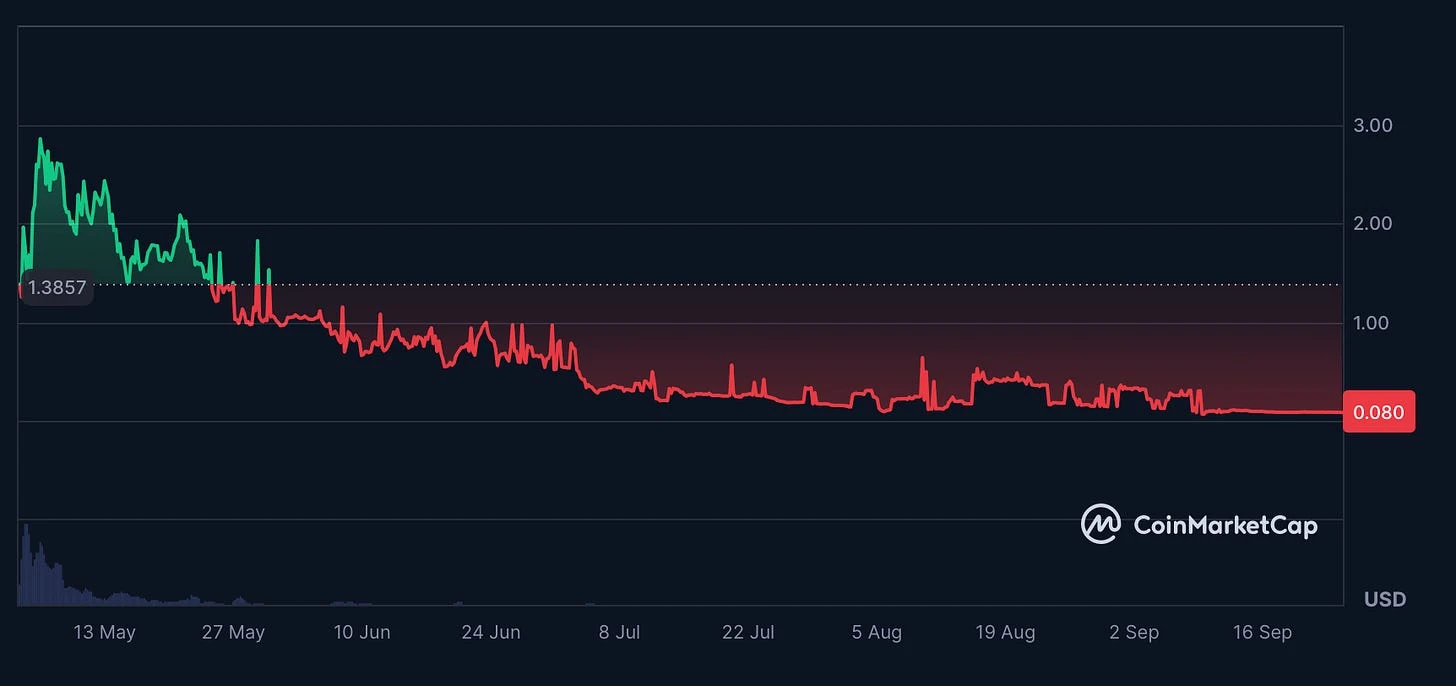
The conclusion is clear: in order for Web3 platforms to thrive, they need to provide substance beyond speculation.
Why do projects that rely too much on tokens run into trouble in the long run?
Projects that rely too much on token hype may achieve rapid success but struggle to sustain that momentum. Token prices in these ecosystems are often driven by hype and speculation, but without a solid foundation of utility, users quickly lose interest. Once the excitement fades and users realize there is no deeper value, token prices collapse, causing users to exit, creating a vicious cycle.
This problem was very evident in Axie Infinity, a game that relied on a dual token system to support its growing player base. As the number of users continued to increase, the economy became over-inflated and the token rewards could no longer sustain user growth. Eventually, the entire system collapsed because the token economy could not keep up with the rapid growth of players.

Axie Infinitys chart
Similar issues arose with STEPN, a fitness app that initially attracted users by offering token rewards to incentivize physical activity. However, as token supply increased and prices fell, user engagement declined, exposing the fundamental flaw of relying solely on token incentives to drive long-term engagement. Although Axie generated significant revenue from marketplace fees and in-game purchases, the project’s reliance on token growth and user expansion ultimately led to its failure when growth rates slowed.
Similarly, STEPN, a fitness app that initially attracted users through token rewards, failed to maintain user engagement after the token price fell due to oversupply. Although Axie generated revenue through purchases and market fees, its business model was too dependent on user growth and token rewards, which ultimately led to its failure when growth slowed.
Web3 Games vs. Web2 Games
The challenges faced by projects like Friend.tech and Axie Infinity highlight a larger problem in the Web3 gaming space. Web3 games face challenges in revenue generation compared to traditional Web2 games. For example, a recently released Web2 game made $600 million in its first week — numbers Web3 games have yet to come close to. This isn’t because Web3 games are a bad concept; it’s because the technology is not being fully utilized, resulting in many missed opportunities.
A major problem is that many Web3 games are still too focused on token-based systems where players are incentivized through financial rewards rather than actual gaming experiences. This over-reliance on token economics creates unrealistic expectations, and players are disappointed when the gaming experience fails to live up to the hype. To truly compete with Web2 games, Web3 projects need to shift their focus to what makes the games themselves fun and engaging. Technology should be used to enhance the gaming experience, rather than being the centerpiece of the game.
To succeed, Web3 games must shift to a gameplay-centric model. Blockchain technology has the potential to deliver innovative experiences, but it should be used as a tool to enhance immersion, not as a driver of an entire economy. Web3 games can only reach their potential when the focus shifts from token economics to creating truly fun and engaging player experiences.
So, what changes should be made?
Financial indicators of success
-
Web3 projects must go beyond simply focusing on token prices. Just as traditional tech companies track key metrics such as revenue, profit margins, and active users, Web3 projects should also do this by measuring actual user activity and value creation.
-
The focus should be on identifying and defining a set of key metrics that are appropriate for a specific industry and business – this can only be achieved through more specific benchmarking with Web2 counterparts and active communication with customers.
User Centered Design
-
Another important shift is a focus on user experience (UX) – ease of use of interfaces and interactions with technology.
-
Web3 platforms need intuitive, user-friendly designs to ensure their long-term growth. Currently, most experiences are complex, involving complicated wallet management and steep learning curves, which makes it easy for new users to give up halfway.
-
Simplifying the onboarding process and improving wallet usability are key steps. Excellent projects like Privy, Dynamic, and Turnkey are working on solving these problems.
-
Long-term user engagement is equally critical. Platforms must provide real value to ensure users keep returning, not just speculative rewards. For example, Audius enables artists to connect with fans in a meaningful way, adding value beyond token incentives. This, combined with the appropriate technical solutions, is exactly what is needed.
Challenges of Utility Implementation
-
One of the biggest challenges is scalability. Blockchains often face difficulties in processing a large number of transactions at a low cost. For example, Ethereum’s high gas fees have hindered wider adoption, and developers are turning to other chains such as Sui and Solana.
-
Interoperability is also an ongoing issue, as many platforms operate in isolation. Cross-chain solutions like Polkadot and Cosmos are making progress, but they have yet to truly become market leaders.
-
Finally, regulation is always a major challenge. This has eased somewhat with the approval of ETFs, but there are still concerns and blurred legal lines that need to be addressed.
결론적으로
Web3 has tremendous potential, but to achieve lasting success it must move beyond token speculation. Projects like Friend.tech and Axie Infinity have shown that while hype can lead to quick gains, it does not equate to sustained long-term growth.
To thrive, Web3 platforms must focus on creating real value — which begins with:
-
Build products that actually work
-
Track meaningful metrics like active users and transaction volume, not just token price
-
Build for users
-
Create a seamless and engaging experience for users
-
Not just hype based on speculation, but prioritize the practicality of the product.
Simplifying the user experience and solving real needs will foster long-term user engagement. Overcoming technical challenges such as scalability, interoperability, and regulation is critical to broader adoption. The future of Web3 lies in projects that combine innovative technology with practical, user-centric solutions to create lasting impacts that go beyond token economics.
부인 성명
The editor of this post holds investments in HNT (Helium) and GEOD (GEODNET) but is not the author of this post.
The Blockcrunch Podcast (“Blockcrunch”) is an educational resource designed to be informative and for informational use only. Blockcrunch produces a weekly podcast and newsletter that often covers Web 3 projects and may discuss investments in which the host or his guests have financial risk.
Some Blockcrunch VIP posts are written by contractors at Blockcrunch, and these posts express the contractors independent opinions, not Blockcrunchs official position. Blockcrunch requires contractors to disclose their financial exposure to the projects they write about, but cannot fully guarantee that there will not be such conflicts of interest. Blockcrunch itself will not buy or sell assets covered within 72 hours before or after any content is published; however, its directors, employees, contractors, and affiliates may buy or sell assets before or after any content is published, and will make every effort to disclose relevant information.
The opinions expressed by Blockcrunch guests are their own. Blockcrunch, its registered entities, or any associated persons are not licensed to provide financial advice of any kind, and content on Blockcrunchs podcast, newsletter, website, and social media should not be construed as financial advice. Blockcrunch also receives compensation from its sponsors; sponsorship information should not be considered financial advice or an endorsement.
This article is sourced from the internet: Beyond short-term token speculation, which projects should we focus on that can generate sustained profits?
Related: A look at the 21 projects selected for the a16z CSX Accelerator
Original | Odaily Planet Daily ( @OdailyChina ) Author: Azuma ( @azuma_eth ) In the early hours of this morning Beijing time, Jason Rosenthal, partner of a16z Crypto, announced on X the 21 projects selected for the a16z Crypto Startup Accelerator (CSX) Fall Program. According to the official description of a16z Crypto, the projects selected for this accelerator program come from 11 different countries, including Austria, Brazil, Bulgaria, Canada, Germany, Japan, Poland, Portugal, the United Arab Emirates, the United Kingdom and the United States (including Puerto Rico). The project categories cover all stacks of the cryptocurrency ecosystem, including AI, DeFi, infrastructure, as well as photo sharing, mapping and more C-end applications. In the next 8 weeks, this batch of projects will receive guidance from top investors and founders in the…







